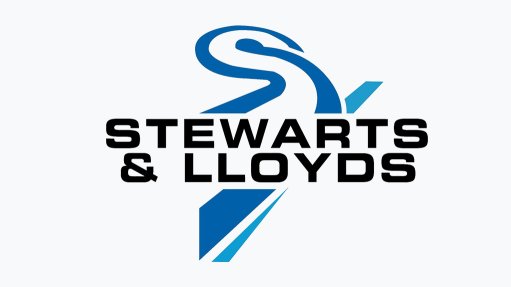The real cost of graft in South Africa
Speaking at the Financial Times Africa Summit, in London, on October 13, President Cyril Ramaphosa said the cost of his predecessor’s decade-long rule “runs way beyond, in my view, more than R500-billion – some people have even suggested that it could be R1-trillion”.
This figure of R500-billion is equivalent to about a tenth of South Africa’s gross domestic product and R1-trillion about a twentieth.
Under the headline ‘Graft under Jacob Zuma cost South Africa $34bn, says Ramaphosa’, the Finacial Times reported that “analysts had estimated that Africa’s most industrialised nation lost between R1-trillion and R1.5-trillion in missing tax revenues and a lack of foreign investment, in addition to the direct costs of graft”.
According to Wikipedia’s definition, ‘graft’, which is American English, is a form of political corruption – the unscrupulous use of a politician’s authority for personal gain. It adds that political graft occurs when funds intended for public projects are intentionally misdirected in order to maximise the benefits to private interests. In South Africa, it is termed ‘State capture’, which, contrary to popular belief, did not originate in South Africa. It was coined by the International Bank for Reconstruction and Development, commonly known as the World Bank, in 2000. It was used to describe the situation in some Central Asian countries making the transition from Soviet communism, where small corrupt groups used their influence over government officials to appropriate government decision-making in order to strengthen their own economic positions. The World Bank defines State capture as “a type of systemic political corruption in which private interests significantly influence a State’s decision-making processes to their own advantage”.
If this column was a political commentary, it would point to the fact that, although there had been a change in government, the ruling party remained the same and Ramaphosa previously served in government as the Deputy President.
However, since this column has an economic focus, I will deal with the real cost of graft in South Africa since the advent of democracy. Noneconomists might think of the cost simply as a number – the accounting cost – which, as the name suggests, is the aggregate of all financial costs incurred. But it ignores a most vital type of cost – a ‘lost’ cost, which needs to be added to the aggregate cost. This is termed the opportunity cost. It is the real cost.
An opportunity cost implies that there is a real cost to any decision that is taken. In the instance of graft, the cost is more significant than most cost types, as money is directed away from socioeconomic and infrastructure investment. During the Zuma era, maintenance of, as well as investment to improve, infrastructure was largely neglected.
Holding infrastructure investment in abeyance means that the cost of such investment will increase exponentially when it is eventually undertaken. The doubling of investment in the year following a year of noninvestment is simply not enough to erase the previous year’s noninvestment. It could be argued that government has never truly appreciated the infrastructure of which it is the custodian and does not quite grasp the true cost of the lack of its maintenance.
The true cost of graft in South Africa cannot simply be expressed as a financial figure – that is, money that was redirected from government’s purse. A more realistic figure should include the cost of forgoing maintenance and the lack of investment, which has had a devastating effect on South Africans and State-owned enterprises (SOEs). I cannot, for the life of me, see how government will be able to give away or sell SOEs for even a R1 apiece, as such a sale would entail the buyer taking on the financial liabilities.
The cost of graft in this country will continue to mount way into the future. Unlike a water tap, it simply cannot be closed at a whim. The opportunity cost of graft will continue to be felt for generations to come.
Article Enquiry
Email Article
Save Article
Feedback
To advertise email advertising@creamermedia.co.za or click here
Comments
Press Office
Announcements
What's On
Subscribe to improve your user experience...
Option 1 (equivalent of R125 a month):
Receive a weekly copy of Creamer Media's Engineering News & Mining Weekly magazine
(print copy for those in South Africa and e-magazine for those outside of South Africa)
Receive daily email newsletters
Access to full search results
Access archive of magazine back copies
Access to Projects in Progress
Access to ONE Research Report of your choice in PDF format
Option 2 (equivalent of R375 a month):
All benefits from Option 1
PLUS
Access to Creamer Media's Research Channel Africa for ALL Research Reports, in PDF format, on various industrial and mining sectors
including Electricity; Water; Energy Transition; Hydrogen; Roads, Rail and Ports; Coal; Gold; Platinum; Battery Metals; etc.
Already a subscriber?
Forgotten your password?
Receive weekly copy of Creamer Media's Engineering News & Mining Weekly magazine (print copy for those in South Africa and e-magazine for those outside of South Africa)
➕
Recieve daily email newsletters
➕
Access to full search results
➕
Access archive of magazine back copies
➕
Access to Projects in Progress
➕
Access to ONE Research Report of your choice in PDF format
RESEARCH CHANNEL AFRICA
R4500 (equivalent of R375 a month)
SUBSCRIBEAll benefits from Option 1
➕
Access to Creamer Media's Research Channel Africa for ALL Research Reports on various industrial and mining sectors, in PDF format, including on:
Electricity
➕
Water
➕
Energy Transition
➕
Hydrogen
➕
Roads, Rail and Ports
➕
Coal
➕
Gold
➕
Platinum
➕
Battery Metals
➕
etc.
Receive all benefits from Option 1 or Option 2 delivered to numerous people at your company
➕
Multiple User names and Passwords for simultaneous log-ins
➕
Intranet integration access to all in your organisation














